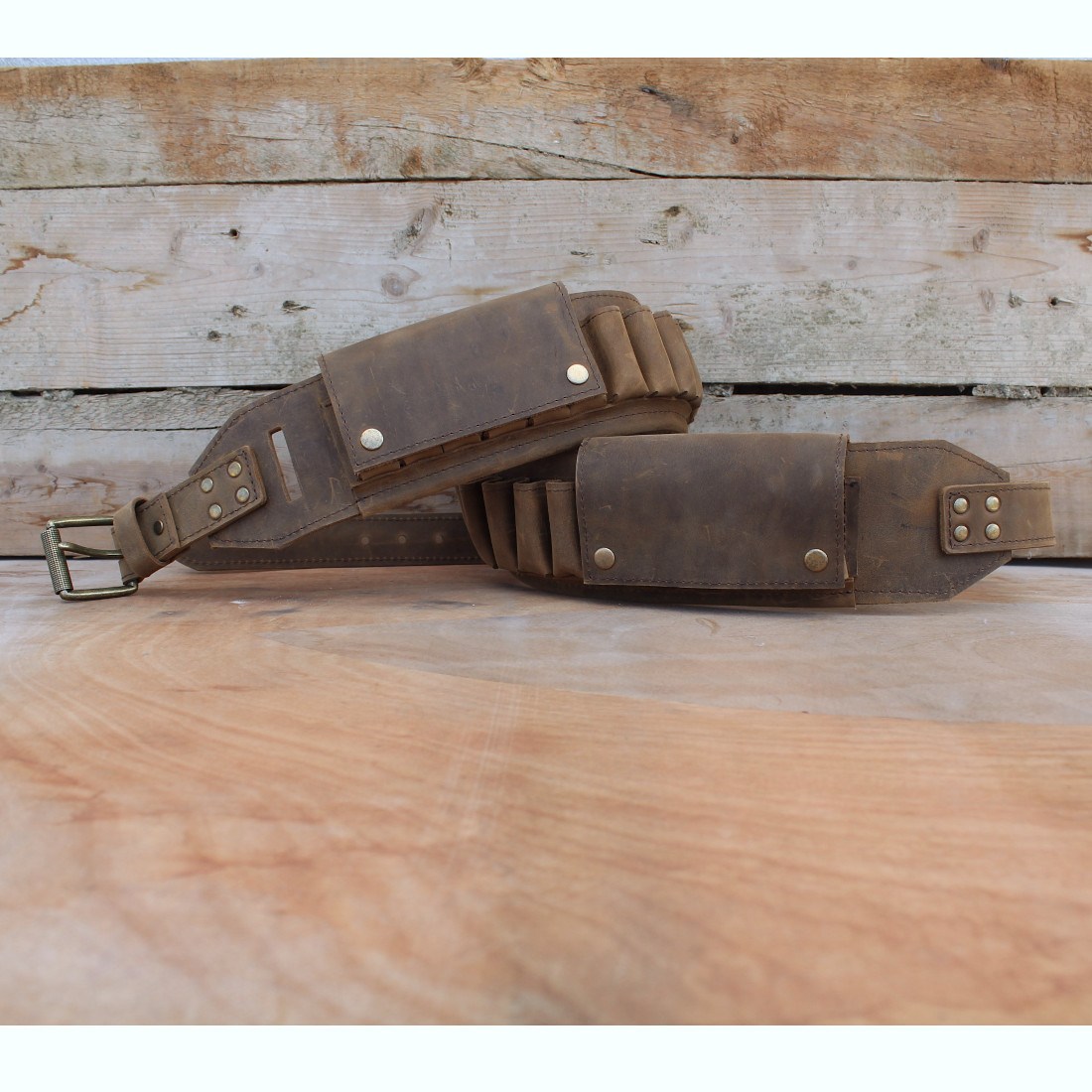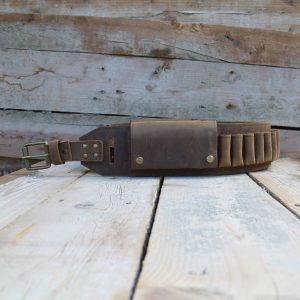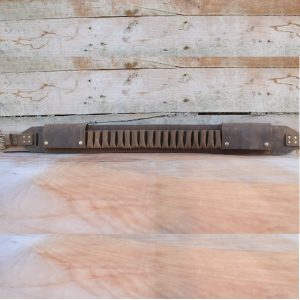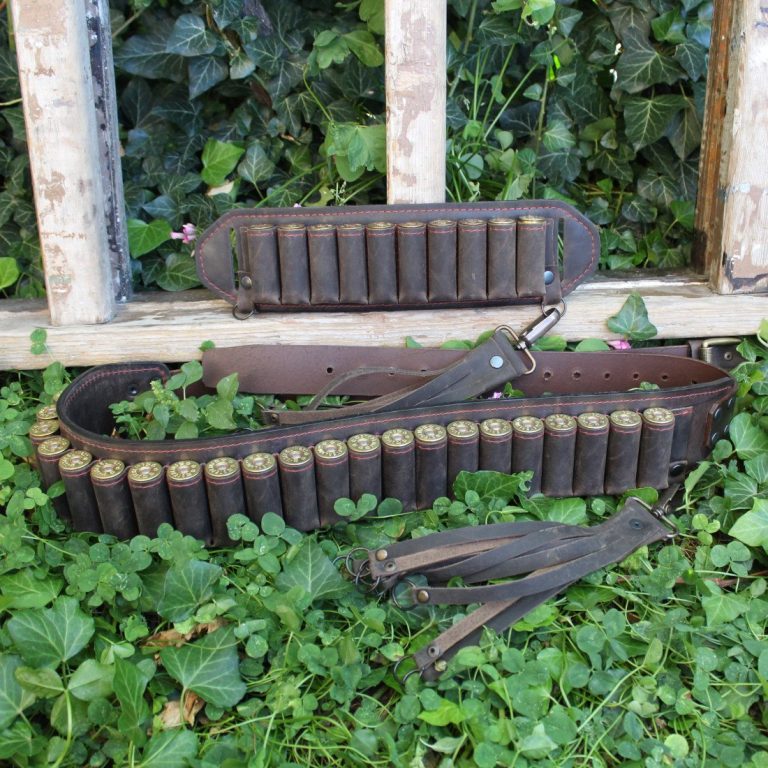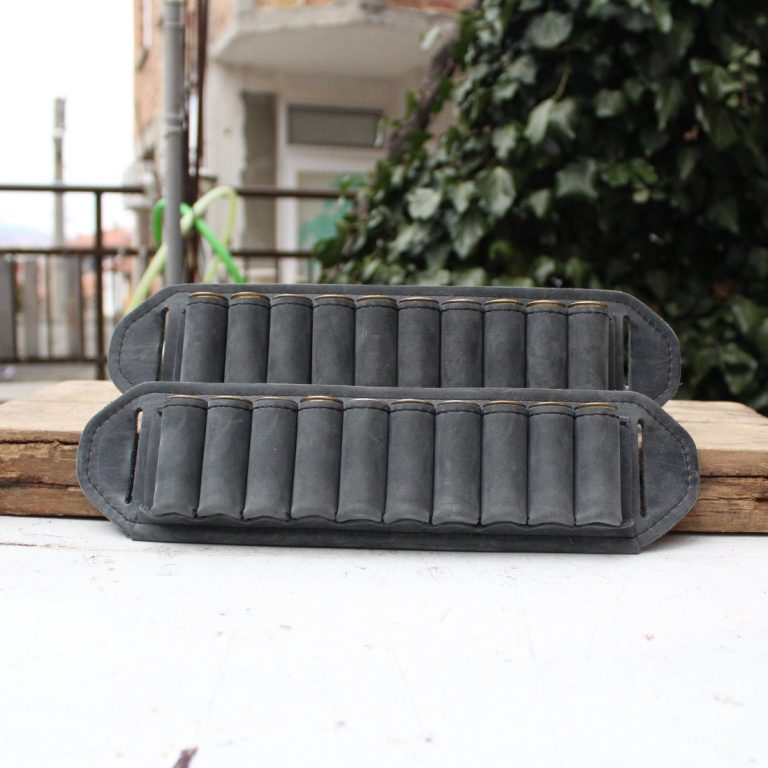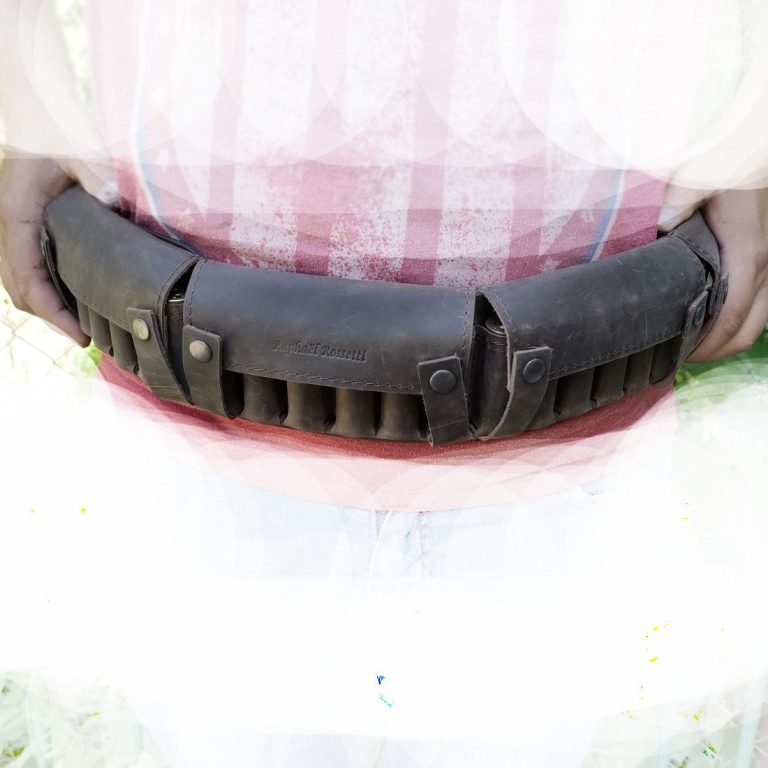There’s a moment before the first step into the field when a hunt becomes more than movement and weather and prey. It’s in the pause — the intentional act of getting ready — that something deeper happens. You don’t merely strap on equipment. You enter a ritual. Leather plays a central role in that ritual: the feel of it, the smell of it, the small, satisfying sounds it makes. It roots the hunter to a tradition that’s tactile as much as it is mental.
The Scent That Settles You
Open a drawer of well-made leather and you’ll understand why some preparations feel sacred. The scent of leather is immediate and complex: warm and slightly sweet, with earthy undertones that suggest wood smoke and worn canvas. Crazy Horse and other vegetable-tanned leathers carry a distinct aroma — a whisper of the hide’s origin, the oils used in tanning, the hands that worked it.
That scent does something to the mind. It quiets the rush of the day and replaces it with memory and focus. For many hunters, breathing in that leather is the first act of the hunt: an inhalation that signals the transition from ordinary hours to purposeful readiness. It is a scent that carries history — previous seasons, other mornings, the slow accumulation of use. In a noisy world, it’s a small, steady anchor.
The Touch That Reassures
Leather is a sensory bridge between person and task. Slip a cartridge belt on and the leather moulds against your hip; it softens where it meets you and stiffens where it needs to hold. Smooth straps become familiar. Buckles, when polished and solid, click with a confident finality. Fingers remember which loop has the snug fit for a favorite shell. Hands move through practiced motions: threading, tightening, checking, rechecking.
This tactile rehearsal matters. It trains the eye and steadies the wrist. The way leather responds — the give, the spring, the subtle resistance at the edges — becomes a kind of feedback loop. If something is wrong (a loose stitch, a stiff hinge), your fingers notice before your mind does. In the field, those small, split-second corrections are everything.
The Sound That Confirms
There’s an unmistakable sound to gear that’s been made right: the soft rasp when leather layers rub, the hollow click when a buckle locks, and the crisp, satisfying snap when a cartridge slides home into its loop. The sound of shells clicking into place is especially resonant — percussion for a ritual. It’s both practical (you know the shells are secure) and emotional (each click is a deliberate, measured beat of preparation).
These sounds create rhythm. They slow you down into precision. They replace anxious thoughts with task-focused action. A practiced hunter won’t rush that clicking. Each shell seated is a promise made — to respect the craft, to be present, to act with purpose.
The Mindset of Preparation
Gearing up is a rehearsal of intent. The physical actions — tightening straps, smoothing leather, loading loops — are mirrors for the mental state you want in the field: calm, alert, patient. Ritualizing these steps helps shift the mind from the scattered demands of life to the single, clear aim of the hunt.
This is why many hunters develop a routine: the order of pockets checked, the way the strap crosses the shoulder, the quiet glance at the horizon before the first step. Habits aren’t restrictions; they’re tools. They free the mind from micro-decisions during the hunt, allowing instinct and skill to take over.
Tradition Woven into Material
Leather carries lineage. A cartridge belt, worn-in and double-stitched, is a map of past hunts and seasons. Scuffs, creases, and the patina that develops in years are not flaws — they’re proof of a life lived in the outdoors. Passing a leather piece from one generation to the next is passing more than an object; it’s passing knowledge, stories, and an ethic.
Handmade leather goods deepen that connection. When a belt is sewn by hand, every stitch is deliberate. When engraving or personalization is added — a name, initials, a date — the object becomes a vessel of memory. These are the things hunters reach for not because they are new, but because they are true.
And this reverence for the ritual naturally extends to the care of the gear itself.
Practical Measures That Honor the Ritual
Ritual isn’t only about feeling. It’s also about care. Respect for the material extends the life of the gear and honors the tradition behind it.
► Inspect before you go: Check stitching, loops, and buckles. Replace or repair anything that shows stress.
► Keep leather conditioned: A light, natural leather conditioner keeps it supple and water-resistant without stripping character.
► Seat shells gently: Avoid forcing cartridges into loops; a firm, controlled click is enough.
► Store with care: Hang belts flat or roll pouches loosely to preserve shape. Avoid damp, hot places.
These small acts of maintenance are part of the ritual. Caring for the leather is caring for what it represents.
The Quiet Joy of Customization
Personal touches — engraving a name, stamping initials, choosing contrasting thread — aren’t vanity. They are affirmation. Customization transforms gear into identity. It makes a pouch or a belt recognizable at a glance, and keepsakes that elicit stories around late-night fires. A personalized set becomes a private language between the maker, the owner, and the field.
The Moment Before the First Step
Finally, there’s that brief, almost sacred moment after gear is on and before the first stride. Your hands fall still. Your breath evens. The world becomes a narrower frame: a lane between the trees, the sound of the wind, the promise of the day. Leather, with its scent and sound and weight, plays a crucial role in that pause. It is the familiar bridge between memory and action.
When you walk away from the car or through the gate, that moment of readiness travels with you. You carry the ritual you’ve practiced: the smell of leather at your back, the click of shells at your hip, the knowledge that you’ve prepared with care. The hunt itself becomes an extension of that ritual — a living thing made from preparation, patience, and quiet respect.
Closing Thought
Gearing up with leather is never just about utility. It is a ritual that engages the senses, centers the mind, and connects you to a lineage of makers and hunters. In the click of a shell, the warmth of an aged belt, and the slow, satisfying stretch of softened leather, you’ll find a practice that is at once practical and profoundly human.
When the day is done, those worn pieces are more than gear; they are stories, kept close to the body and the heart.
Ready to begin your own ritual? Explore our handcrafted leather cartridge belts, designed to be your companion for a lifetime.

